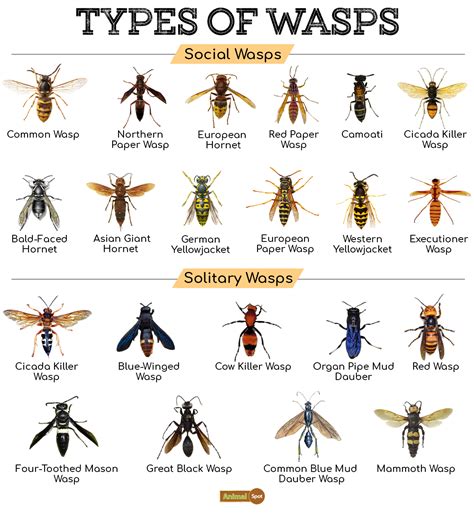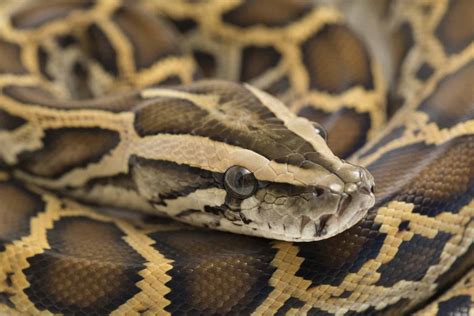
California is deploying a natural solution to combat invasive pests threatening its agriculture and ecosystems: native wasps. State officials are releasing these tiny but mighty allies to target and control populations of harmful insects, offering a sustainable and environmentally friendly alternative to traditional pesticides.
The California Department of Food and Agriculture (CDFA) has initiated a statewide program focused on mass-rearing and releasing native wasp species known to prey on specific invasive insects. This biological control strategy aims to reduce the economic damage caused by pests and minimize the reliance on chemical interventions that can have adverse effects on the environment and human health.
“This is a targeted approach,” said Dr. Sharmaine Wickham, a leading entomologist with the CDFA. “We are carefully selecting native wasp species that have a proven track record of effectively controlling the target pest without posing a threat to other beneficial insects or the ecosystem as a whole.”
The program focuses on several key invasive species that have been causing significant damage in California. Among these are the spotted lanternfly, the Asian citrus psyllid (vector of Huanglongbing disease), and various agricultural pests that attack crops like tomatoes, grapes, and almonds.
The use of native wasps as a biological control agent is not a new concept, but the scale and sophistication of the current CDFA program mark a significant step forward in integrated pest management. The program involves extensive research to identify the most effective wasp species for each target pest, followed by mass-rearing in specialized facilities, and carefully planned releases in affected areas.
The spotted lanternfly, for example, poses a grave threat to California’s grape, orchard, and timber industries. While not yet widely established in California, aggressive measures are being taken to prevent its spread, including the release of natural enemies like native wasps.
The Asian citrus psyllid, a tiny insect that transmits the deadly Huanglongbing (HLB) disease to citrus trees, is another major target of the program. HLB, also known as citrus greening, has already decimated citrus groves in Florida and poses an existential threat to California’s $3.4 billion citrus industry. The CDFA is releasing specific wasp species that parasitize the psyllid, helping to keep its populations in check and slow the spread of HLB.
The program emphasizes a science-based approach, with ongoing monitoring and evaluation to assess the effectiveness of the wasp releases. Researchers are closely tracking pest populations, wasp establishment rates, and the overall impact on the ecosystem.
“We are committed to ensuring that this program is both effective and environmentally responsible,” said CDFA Secretary Karen Ross. “We are working closely with farmers, researchers, and other stakeholders to develop and implement strategies that protect California’s agriculture and natural resources for future generations.”
The use of native wasps as a biological control agent offers several advantages over traditional pesticides. It is a sustainable approach that reduces the reliance on chemical interventions, minimizing the risk of pesticide resistance, environmental contamination, and harm to non-target organisms. It is also a cost-effective solution, as the wasps reproduce and spread on their own, providing long-term pest control.
However, the program also faces challenges. One of the main challenges is ensuring that the released wasps establish and thrive in the environment. Factors such as climate, habitat availability, and the presence of other natural enemies can affect the success of the releases. Another challenge is public perception, as some people may be wary of releasing insects into the environment.
To address these challenges, the CDFA is conducting extensive outreach and education to inform the public about the program and its benefits. They are also working closely with local communities to ensure that the releases are conducted in a safe and responsible manner.
The program represents a significant investment in biological control research and implementation. The CDFA has established specialized facilities for mass-rearing the wasps, and has hired a team of entomologists and other experts to oversee the program. The program is also supported by grants from the federal government and private organizations.
The success of the program could have far-reaching implications for pest management in California and beyond. If proven effective, it could serve as a model for other states and countries looking for sustainable and environmentally friendly solutions to combat invasive pests.
In-Depth Analysis and Expanded Context:
The CDFA’s initiative to deploy native wasps against invasive species is a multifaceted approach that reflects a growing understanding of ecological balance in pest management. Biological control, in essence, is not just about eliminating pests; it’s about restoring natural predator-prey relationships that have been disrupted by human activity and global trade. The introduction of invasive species often throws ecosystems off balance, creating conditions where pests thrive due to the absence of natural enemies.
The selection process for choosing which wasp species to utilize is meticulously scientific. Entomologists consider several factors, including host specificity, environmental compatibility, and potential non-target effects. Host specificity refers to the wasp’s ability to target only the intended pest species, minimizing the risk of harm to beneficial insects. Environmental compatibility ensures that the wasp can survive and reproduce in California’s diverse climate zones. Non-target effects are carefully assessed to rule out any unintended consequences on other organisms or the ecosystem as a whole.
The mass-rearing of these wasps is a complex undertaking that requires specialized facilities and expertise. The wasps are typically reared in controlled environments where temperature, humidity, and light levels are carefully regulated. They are provided with a constant supply of host insects or artificial diets to ensure their healthy development. The rearing process must also be carefully monitored to prevent the spread of diseases or parasites that could compromise the effectiveness of the wasps.
The release of the wasps is strategically planned to maximize their impact. The timing of the releases is crucial, as the wasps must be released when the target pest is most vulnerable. The release locations are also carefully selected based on factors such as pest density, habitat availability, and proximity to agricultural areas. The wasps are typically released in large numbers to increase the likelihood of establishment.
Once released, the wasps begin to hunt for their target pests. The female wasps typically lay their eggs inside or on the pest insects. When the wasp larvae hatch, they feed on the host insect, eventually killing it. The wasps then reproduce and spread, providing long-term pest control.
The success of the program is closely monitored through ongoing research and evaluation. Researchers track pest populations, wasp establishment rates, and the overall impact on the ecosystem. They also conduct studies to assess the potential non-target effects of the wasp releases. The data collected from these studies is used to refine the program and ensure its effectiveness and environmental responsibility.
The use of native wasps as a biological control agent is not without its challenges. One of the main challenges is ensuring that the released wasps establish and thrive in the environment. Factors such as climate, habitat availability, and the presence of other natural enemies can affect the success of the releases. For instance, if the habitat is degraded or fragmented, the wasps may have difficulty finding suitable nesting sites or prey. Similarly, if there are other natural enemies present, they may compete with the released wasps for resources.
Another challenge is public perception. Some people may be wary of releasing insects into the environment, fearing that they could become pests themselves. It is important to educate the public about the program and its benefits, and to address any concerns they may have. The CDFA is conducting extensive outreach and education to inform the public about the program and its benefits. They are also working closely with local communities to ensure that the releases are conducted in a safe and responsible manner.
The program represents a significant investment in biological control research and implementation. The CDFA has established specialized facilities for mass-rearing the wasps, and has hired a team of entomologists and other experts to oversee the program. The program is also supported by grants from the federal government and private organizations. This investment reflects a growing recognition of the importance of biological control as a sustainable and environmentally friendly approach to pest management.
Specific Invasive Species Targeted:
-
Spotted Lanternfly: This invasive planthopper is a major threat to grapes, orchards, and forests. It feeds on the sap of plants, weakening them and making them more susceptible to disease. The spotted lanternfly has already caused significant damage in the eastern United States, and is now spreading westward. The CDFA is taking aggressive measures to prevent its establishment in California, including the release of native wasps that attack its eggs.
-
Asian Citrus Psyllid: This tiny insect is a vector of Huanglongbing (HLB) disease, also known as citrus greening. HLB is a deadly disease that has already decimated citrus groves in Florida and poses an existential threat to California’s $3.4 billion citrus industry. The CDFA is releasing specific wasp species that parasitize the psyllid, helping to keep its populations in check and slow the spread of HLB. The wasp Tamarixia radiata has been instrumental in controlling psyllid populations in some areas.
-
Agricultural Pests: Various other agricultural pests are also being targeted by the program, including those that attack crops like tomatoes, grapes, and almonds. These pests can cause significant economic damage to farmers by reducing yields and increasing production costs. The CDFA is releasing native wasps that prey on these pests, providing a sustainable and environmentally friendly alternative to traditional pesticides.
The Role of Integrated Pest Management (IPM):
The use of native wasps as a biological control agent is an integral part of Integrated Pest Management (IPM). IPM is a comprehensive approach to pest management that emphasizes the use of multiple tactics to control pests while minimizing the risk to human health and the environment. IPM strategies include cultural practices, biological control, and the judicious use of pesticides.
Cultural practices, such as crop rotation, sanitation, and proper irrigation, can help to prevent pest outbreaks. Biological control, such as the release of native wasps, can help to suppress pest populations. Pesticides are used only as a last resort, and are applied in a targeted manner to minimize their impact on non-target organisms.
IPM is a science-based approach that relies on monitoring and evaluation to assess the effectiveness of different control tactics. IPM programs are tailored to the specific needs of each situation, taking into account the target pest, the crop or ecosystem being protected, and the environmental conditions.
Benefits of Biological Control:
The use of native wasps as a biological control agent offers several advantages over traditional pesticides:
- Sustainability: Biological control is a sustainable approach that reduces the reliance on chemical interventions.
- Environmental Friendliness: Biological control minimizes the risk of pesticide resistance, environmental contamination, and harm to non-target organisms.
- Cost-Effectiveness: The wasps reproduce and spread on their own, providing long-term pest control.
- Target Specificity: Native wasps are carefully selected to target specific pests, minimizing the risk of harm to beneficial insects.
Challenges and Future Directions:
Despite its many benefits, biological control also faces challenges. One of the main challenges is ensuring that the released wasps establish and thrive in the environment. Factors such as climate, habitat availability, and the presence of other natural enemies can affect the success of the releases.
Future research will focus on identifying the most effective wasp species for each target pest, and on developing strategies to improve wasp establishment rates. Researchers will also continue to monitor the potential non-target effects of the wasp releases.
Another challenge is public perception. It is important to educate the public about the program and its benefits, and to address any concerns they may have. The CDFA is committed to conducting extensive outreach and education to inform the public about the program and its benefits.
Frequently Asked Questions (FAQ):
-
What are native wasps and how are they used to control invasive pests?
Native wasps are wasp species naturally occurring in California that have evolved to prey on specific insect pests. The CDFA is mass-rearing and releasing these wasps in areas affected by invasive pests. The wasps act as a natural biological control agent, parasitizing or preying on the invasive insects, thereby reducing their populations without relying on chemical pesticides. These wasps are chosen for their host specificity, meaning they primarily target the invasive pests and pose minimal risk to beneficial insects or other organisms. Dr. Sharmaine Wickham of the CDFA emphasizes that this is a “targeted approach,” selecting wasp species with a “proven track record” of controlling the intended pests.
-
Which invasive pests are being targeted by this program and why are they a concern?
The program targets several key invasive species, including the spotted lanternfly, the Asian citrus psyllid (which transmits Huanglongbing disease), and various agricultural pests that attack crops like tomatoes, grapes, and almonds. These pests pose significant threats to California’s agriculture and ecosystems. The spotted lanternfly, for instance, threatens the grape, orchard, and timber industries by feeding on plant sap and weakening them. The Asian citrus psyllid threatens the $3.4 billion citrus industry by spreading Huanglongbing (HLB), a deadly disease.
-
How does the CDFA ensure the safety and effectiveness of releasing native wasps into the environment?
The CDFA employs a science-based approach to ensure the safety and effectiveness of the program. This involves extensive research to identify the most effective wasp species for each target pest, followed by mass-rearing in specialized facilities and carefully planned releases in affected areas. Researchers closely monitor pest populations, wasp establishment rates, and the overall impact on the ecosystem. The CDFA also conducts thorough assessments of potential non-target effects to ensure that the wasp releases do not harm other beneficial insects or the environment. CDFA Secretary Karen Ross stated the department is “committed to ensuring that this program is both effective and environmentally responsible.”
-
What are the benefits of using native wasps for pest control compared to traditional pesticides?
Using native wasps as a biological control agent offers several advantages over traditional pesticides. It is a sustainable approach that reduces the reliance on chemical interventions, minimizing the risk of pesticide resistance, environmental contamination, and harm to non-target organisms. It is also a cost-effective solution, as the wasps reproduce and spread on their own, providing long-term pest control. Biological control supports biodiversity and contributes to a healthier ecosystem.
-
What are the challenges associated with this program and how is the CDFA addressing them?
One of the main challenges is ensuring that the released wasps establish and thrive in the environment, which can be affected by factors such as climate, habitat availability, and the presence of other natural enemies. Another challenge is public perception, as some people may be wary of releasing insects into the environment. To address these challenges, the CDFA conducts extensive outreach and education to inform the public about the program and its benefits. They also work closely with local communities to ensure that the releases are conducted in a safe and responsible manner. The CDFA is continuously monitoring and evaluating the program’s effectiveness and making adjustments as needed to optimize its impact.
Conclusion:
California’s deployment of native wasps to combat invasive species represents a forward-thinking approach to pest management, emphasizing ecological balance and sustainable practices. By leveraging the power of nature, the state aims to protect its vital agricultural industries and preserve its rich biodiversity for future generations. While challenges remain, the CDFA’s commitment to scientific rigor, public education, and collaborative partnerships positions this program as a promising model for integrated pest management strategies worldwide.









